Our computers are complex devices, and issues can arise out of nowhere. It can be incredibly frustrating when one-half of the screen has turned entirely black and unusable, but there are ways you can fix it. In this article, we will see what you can do if the bottom half of your computer screen has turned black.
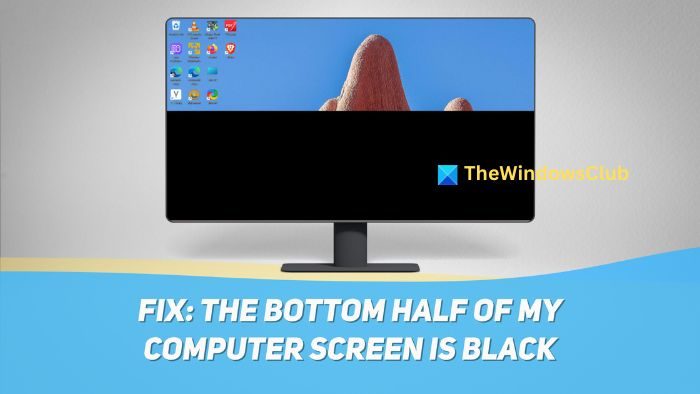
What causes the bottom half of the computer screen to be black?
There are various causes behind the issue of the bottom half of the computer screen turning black; let’s have a look at some:
- Hardware Issues With the Display Port/Cable: The Display Port or Connector cable may cause issues due to prolonged negligent use or superficial hardware damage. Damage in the port or cable pins can lead to poor transmission, turning the bottom half of the screen black.
- Outdated Graphic Drivers: Outdated graphic drivers are one of the primary culprits for this issue. Display manufacturers constantly push out updates that can be used to fix bugs and pre-existing issues with the displays. Outdated drivers will keep all the problems in place.
- Refresh Rate Mismatch: If your monitor supports a high refresh rate but your PC can’t power those refresh rates, or vice versa, this can cause issues. The screen can turn black when the refresh rates on the PC and monitor are incompatible.
- Broken Panel: Display panels are delicate, and while you might not be seeing an evident sign of breakage, chances are that some parts inside have been affected, causing the bottom half of your computer screen to turn black.
The bottom half of my computer screen is black in Windows 11/10
In this section, we will examine four ways to fix the issue of the bottom half of your computer screen turning black.
- Check the Display Port and Cable
- Upgrade Or Downgrade Graphic Drivers
- Change Refresh Rate
- Run SFC
- Get the Monitor checked.
Let’s dive in!
1] Check the display port and cable
First, disconnect your Windows computer from the monitor and try it on another monitor to verify if there is no problem. This will help you determine if the computer’s display port is working. If it does, then there is more likely a problem with the display port on your monitor.
You can also try a different cable. If that cable works, you will know that there is a problem with the cable. If there are issues with the display port and cable, the transmission can be faulty, causing the bottom half of your computer screen to turn black.
Read: Bottom half of my screen is flickering in Windows
2] Upgrade or downgrade graphic drivers
Updates in Display Drivers can make or break your overall experience. If there is a bug in the current drivers, having the updated ones will help you fix the issue. If you have encountered the bottom half of the computer screen turning black issue after the update, consider downgrading the drivers:
- To update, open Windows Settings by pressing the Windows+I keys on your keyboard.
- Now, go to Windows Update > Advanced Options > Optional Updates
- Check if there is an update available for the Display Drivers.
- Select the update and click Download and Install.
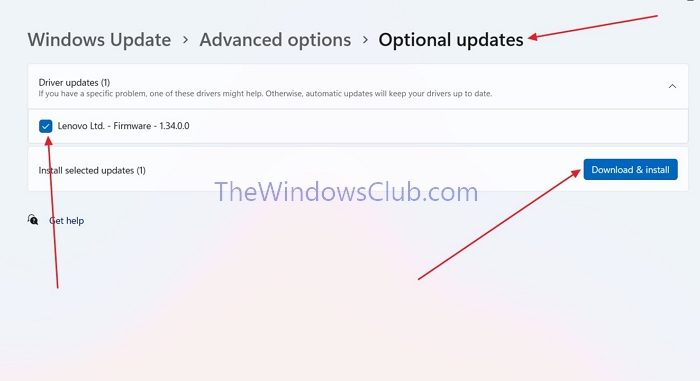
If no download is available, you can visit the OEM website, download, and install the software.
To downgrade the drivers in Windows, follow these steps.
- Open Device Manager by right-clicking the Windows Icon and opening it from the Context menu.
- In the Device Manager, find the Display Adapters option and expand it.
- Right-click your Display Adapter and open Properties. Go to the Drivers tab.
- In the Drivers tab, click Update Driver.
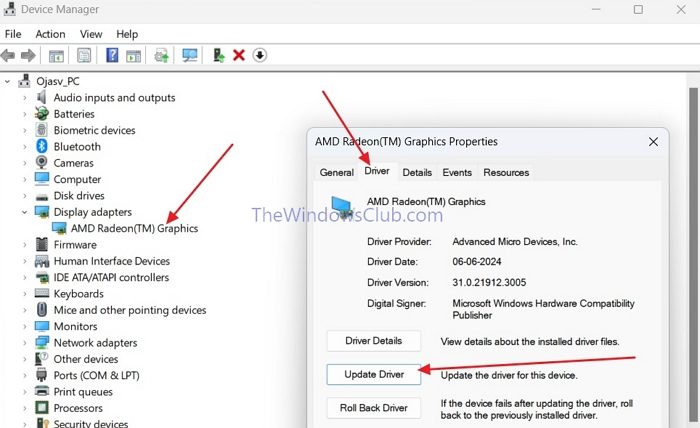
- Now, in the following window, click Browse my computer for drivers, and then click Let me pick from a list of available drivers on my computer.
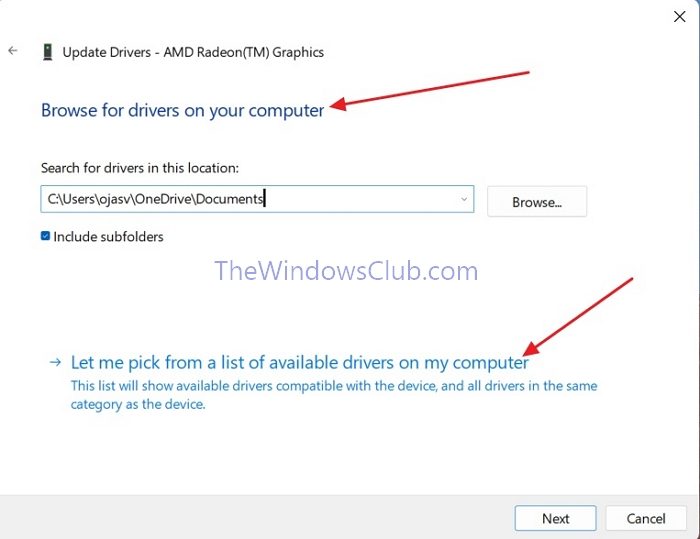
- This will display all the drivers available, including the old ones. Select the previous version, and click Next.
- The driver will be installed automatically.
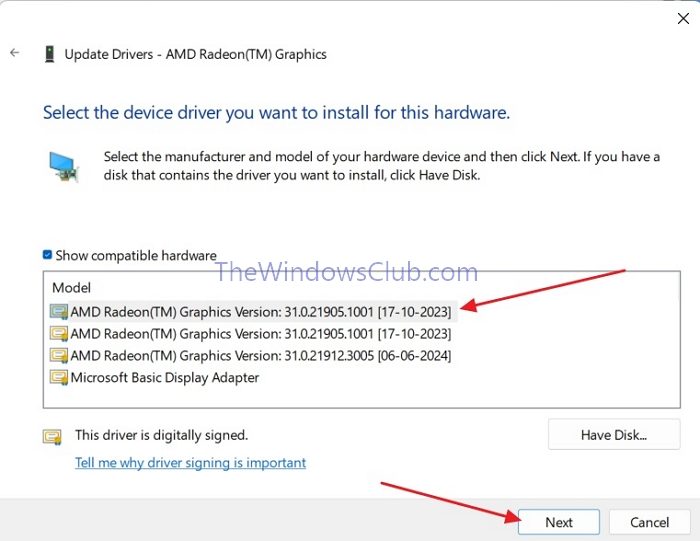
If you cannot find old drivers here, you need to go to OEM website, look for older version, and install it.
3] Change Refresh Rate
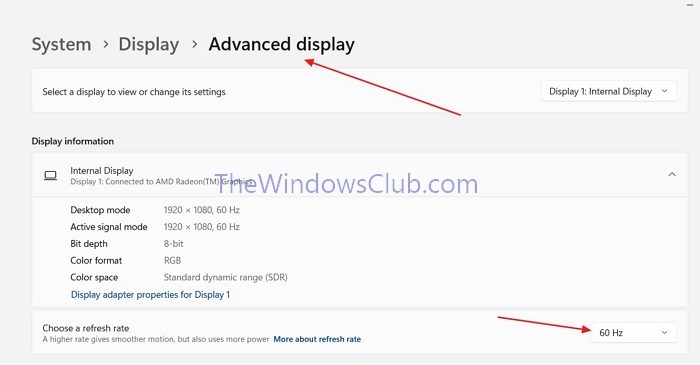
Ensuring a perfect match between your computer’s refresh rate and the monitor is crucial to avoid any issues. If you encounter this problem, you can quickly resolve it by adjusting the refresh rate on your PC to the appropriate setting. To begin, research your computer’s specifications online, then proceed to modify the refresh rate.
- In the Windows settings, navigate to System > Display > Advanced Display, and you’ll find the option to adjust the refresh rate.
- Choose a suitable rate, such as 60 Hertz, which provides seamless functionality and minimizes resource consumption.
4] Run SFC
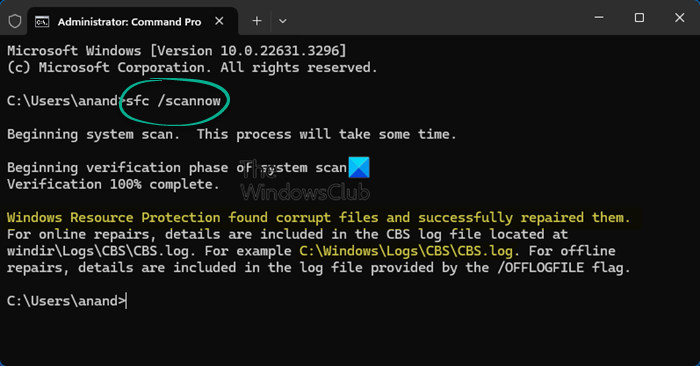
SFC, or the System File Checker, is a command-line utility that checks and fixes corrupted system files in Windows. If files are corrupted with the display drivers and other dependencies, you will encounter issues. SFC can check and fix them.
- Right-click the Windows Start icon and open Terminal (Admin)
- Now, paste the following command and press enter.
sfc /scannow
- After this, the whole process is automatic; it takes some time for SFC to scan and fix corrupted system files. Once completed, restart your PC.
5] Get the Monitor checked
If nothing helps, it could indicate a hardware problem and it might be a good idea
We hope you found this article helpful.
Can Black Screen be fixed?
The black screen on a Windows computer can be fixed if it’s a driver or system file corruption issue. You can upgrade drivers, reset or reinstall Windows, or repair. However, if it’s a hardware issue, you must connect to OEM and get it checked.
How do you fix a Black spot on your screen?
A black spot or dead pixel is a hardware issue that the OEM can only fix when they replace the screen. It is usually not a driver or system issue. But first, you can try using a Dead Pixel Fixer and see if it helps.
Leave a Reply